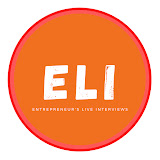Have a collection of written notes, blog posts, or articles that you'd like to transform into podcast episodes? You're not alone. Repurposing written content into audio format is one of the most efficient ways to expand your content reach and engage with audio-first audiences.
This comprehensive guide will walk you through two proven methods: the traditional manual approach and the cutting-edge AI-powered route. Choose the method that best fits your budget, technical comfort level, and quality requirements.
The Benefits of Repurposing Written Content
Before diving into the how-to, let's understand why converting notes to podcasts is such a powerful strategy:
- Expand Your Audience: Reach people who prefer audio content over reading
- Maximize Content ROI: Get more value from existing written material
- Improve Accessibility: Make your content available to visually impaired audiences
- Multi-Platform Presence: Distribute the same core content across different channels
- Time Efficiency: Faster than creating entirely new content from scratch
Method 1: The Manual Way - A Step-by-Step Guide
The traditional approach gives you complete control over the final product and often results in the most natural, engaging audio content.
1Adapt Your Notes into a Podcast Script
Written content and spoken content have different rhythms. Your first step is transforming your notes into a conversational script.
Key Script Adaptations:
- Add Transitions: Insert natural bridges between topics ("Now let's talk about...", "This brings us to...")
- Include Direct Address: Speak directly to your listener ("You might be wondering...", "Here's what you need to know...")
- Simplify Complex Sentences: Break long sentences into shorter, more digestible chunks
- Add Vocal Cues: Note where you want to pause, emphasize, or change tone
- Create Hooks: Add compelling openings and conclusions that work for audio
2Set Up Your Recording Environment
Good audio quality is crucial for podcast success. Here's how to create a professional recording setup without breaking the bank.
Recommended Starter Microphones
Audio-Technica ATR2100x-USB
Best budget option with both USB and XLR outputs
Check Price on AmazonRecording Environment Tips:
- Choose a Quiet Room: Avoid rooms with hard surfaces that create echo
- Add Soft Furnishings: Blankets, pillows, and curtains help absorb sound
- Record at Consistent Times: Avoid peak noise hours in your area
- Use Headphones: Monitor your audio quality in real-time
3Basic Editing and Enhancement
Even simple editing can dramatically improve your podcast quality. Here are the essential editing steps:
Essential Editing Tasks:
- Remove Dead Air: Cut out long pauses and "ums"
- Normalize Audio Levels: Ensure consistent volume throughout
- Add Intro/Outro Music: Create professional bookends for your episode
- Insert Chapter Markers: Help listeners navigate longer episodes
- Export in Podcast Format: MP3, 44.1kHz, 128kbps minimum
Recommended Free Software: Audacity, GarageBand (Mac), or Anchor's built-in editor
Paid Alternatives: Hindenburg Pro, Adobe Audition, or Descript
Method 2: The AI-Powered Way
AI voice generation has reached impressive quality levels, making it a viable option for content creators who want to scale quickly or prefer not to record themselves.
Understanding AI Voice Generation
Modern AI text-to-speech tools use neural networks to create human-like voices that can handle complex text with appropriate intonation, emphasis, and pacing. While not perfect, the best tools are nearly indistinguishable from human speech for certain content types.
Top 3 AI Tools to Turn Text into a Podcast
1. ElevenLabs - Best Overall Quality
Best Features: Voice cloning, emotion control, ultra-realistic speech synthesis
Ideal For: Professional podcasts, content creators who want the highest quality
Limitations: More expensive, requires learning curve for advanced features
Try ElevenLabs2. Murf.ai - Best for Beginners
Best Features: User-friendly interface, collaborative editing, good variety of voices
Ideal For: Business content, educational materials, team projects
Limitations: Less voice customization than competitors
Try Murf.ai3. Speechify - Best Value
Best Features: Affordable pricing, good mobile app, speed control
Ideal For: Budget-conscious creators, simple content conversion
Limitations: Limited voice options, fewer advanced features
Try SpeechifyWhich Method Should You Choose?
Your choice between manual recording and AI generation depends on several factors:
Choose Manual Recording If:
- You want complete creative control over delivery and tone
- Your content requires personal anecdotes or emotional delivery
- You're building a personal brand where your voice is important
- You have time to invest in learning recording and editing
- Budget is extremely tight (after initial equipment investment)
Choose AI Generation If:
- You need to produce content at scale
- You're uncomfortable with your speaking voice or have speech challenges
- Your content is primarily informational or educational
- You want to test podcast viability before investing in equipment
- You need content in multiple languages
Our Recommendation
For most creators starting out, we recommend beginning with the manual method using an affordable USB microphone. This gives you the most authentic connection with your audience and complete creative control.
However, if you're a business looking to repurpose large amounts of written content or need to produce podcasts in multiple languages, AI tools like ElevenLabs offer incredible efficiency and quality.
Getting Started Today
Ready to turn your notes into your next podcast episode? Here's your action plan:
- Choose Your Method: Decide between manual recording and AI generation
- Prepare Your Content: Adapt your notes into a conversational script
- Set Up Your Tools: Get your microphone or AI tool account ready
- Create a Test Episode: Start with a short 10-15 minute episode
- Gather Feedback: Share with friends or colleagues for input
- Iterate and Improve: Refine your process based on results
Remember, the best approach is the one you'll actually use consistently. Whether you choose to record yourself or use AI voices, the key is to start creating and learning from each episode you produce.
